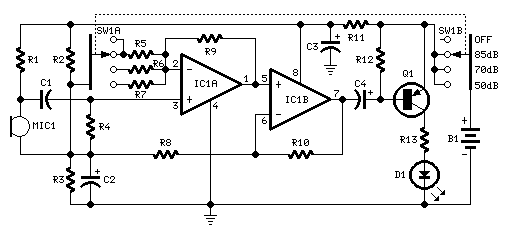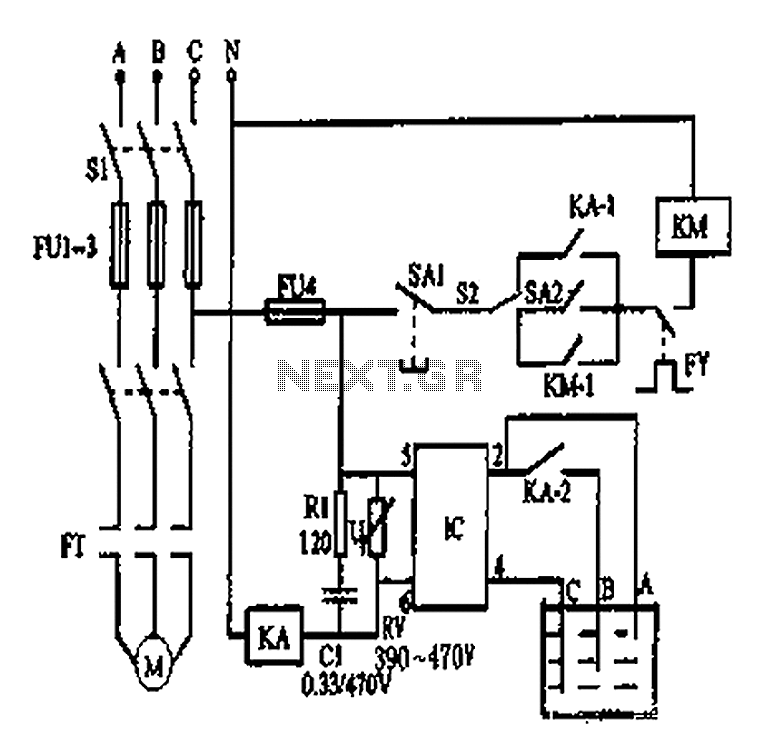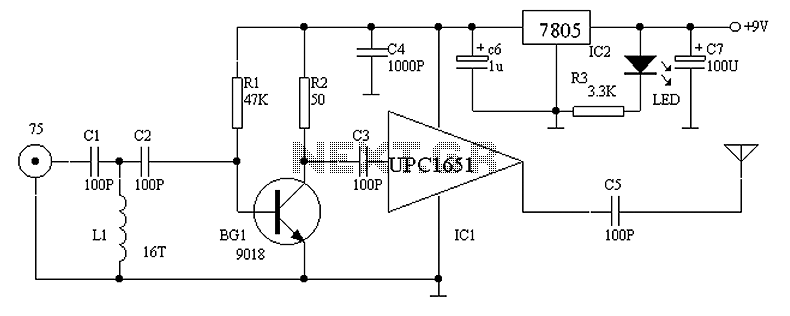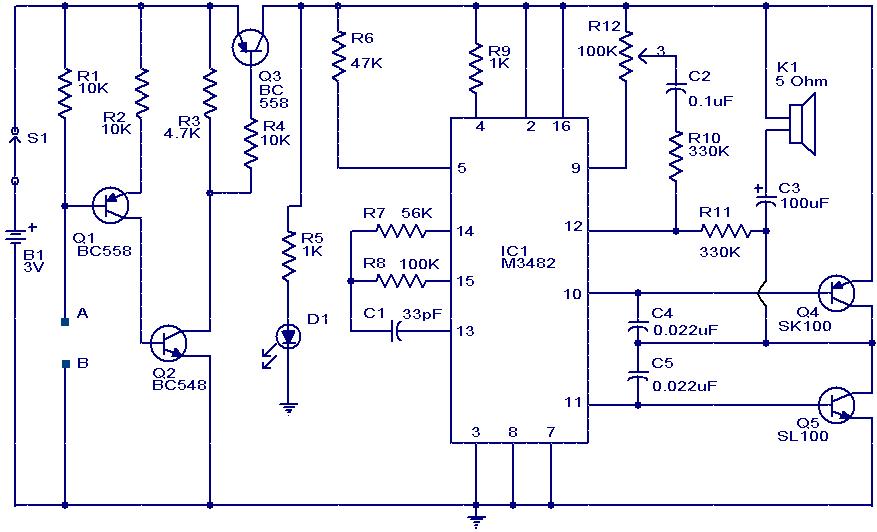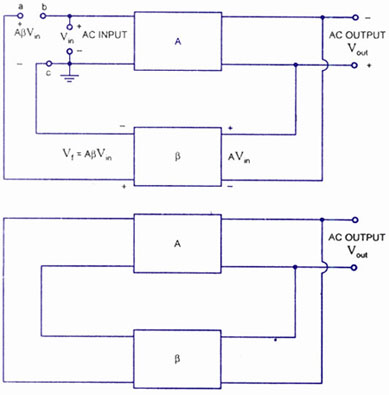
Unsteady direct coupling circuit diagram
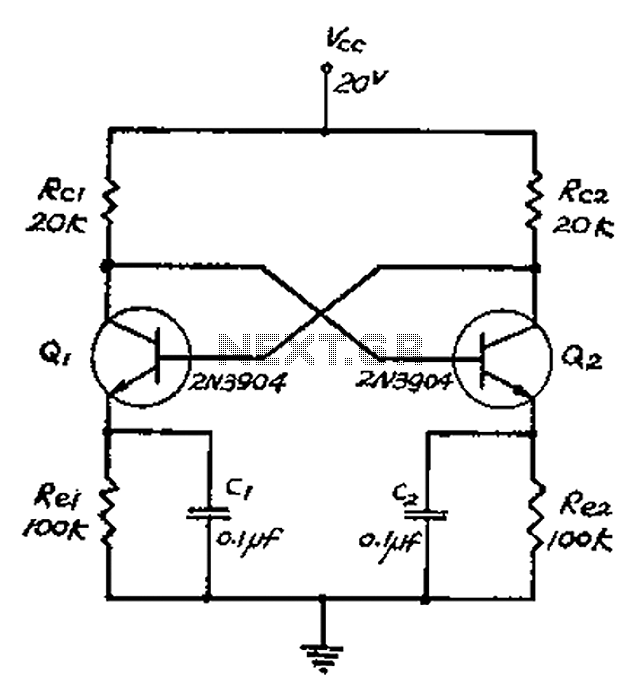
The collector and base-emitter bias of the transistor are directly coupled to each other. Each transmitter circuit controls the capacity conversion function. The emitter generates a triangular wave. The two transistors are not continuously in an active state. Instead, the circuit operates in two fixed states, allowing for charge and discharge capacity conversion between these states.
In this circuit configuration, the direct coupling of the collector and base-emitter bias establishes a feedback mechanism that enhances the performance of the transistors. The triangular wave generated by the emitter serves as a modulation signal, which is essential for applications requiring signal processing or waveform generation.
The operation of the circuit is characterized by its ability to switch between two distinct states. These states correspond to the charging and discharging phases of the capacitive elements in the circuit. During the charging phase, the circuit allows current to flow into the capacitors, storing energy. Conversely, during the discharging phase, the stored energy is released, facilitating the conversion of electrical energy.
The design of this circuit is particularly useful in applications such as signal modulation, where the triangular wave can be used to create varying voltage levels that can be transmitted or processed further. Additionally, the ability to switch states efficiently enables the circuit to conserve power, as the transistors are not continuously active, reducing thermal dissipation and enhancing overall reliability.
The implementation of such a circuit requires careful consideration of component values, including the resistors and capacitors, to ensure the desired frequency and amplitude of the triangular wave are achieved. Moreover, the selection of transistors with appropriate characteristics is crucial to optimize performance and efficiency in the intended application. Overall, the described circuit offers a robust solution for applications requiring effective signal modulation and energy conversion. Both collector and base-emitter bias transistor is coupled directly to each other. Each transmitter circuit capacity control conversion function. The emitter generates a triang ular wave. Two transistors are not always kept awake state. In contrast, the circuit has two fixed state, between these states charge and discharge capacity can be achieved conversion.
In this circuit configuration, the direct coupling of the collector and base-emitter bias establishes a feedback mechanism that enhances the performance of the transistors. The triangular wave generated by the emitter serves as a modulation signal, which is essential for applications requiring signal processing or waveform generation.
The operation of the circuit is characterized by its ability to switch between two distinct states. These states correspond to the charging and discharging phases of the capacitive elements in the circuit. During the charging phase, the circuit allows current to flow into the capacitors, storing energy. Conversely, during the discharging phase, the stored energy is released, facilitating the conversion of electrical energy.
The design of this circuit is particularly useful in applications such as signal modulation, where the triangular wave can be used to create varying voltage levels that can be transmitted or processed further. Additionally, the ability to switch states efficiently enables the circuit to conserve power, as the transistors are not continuously active, reducing thermal dissipation and enhancing overall reliability.
The implementation of such a circuit requires careful consideration of component values, including the resistors and capacitors, to ensure the desired frequency and amplitude of the triangular wave are achieved. Moreover, the selection of transistors with appropriate characteristics is crucial to optimize performance and efficiency in the intended application. Overall, the described circuit offers a robust solution for applications requiring effective signal modulation and energy conversion. Both collector and base-emitter bias transistor is coupled directly to each other. Each transmitter circuit capacity control conversion function. The emitter generates a triang ular wave. Two transistors are not always kept awake state. In contrast, the circuit has two fixed state, between these states charge and discharge capacity can be achieved conversion.
